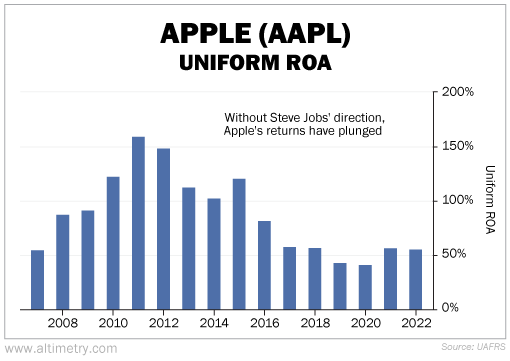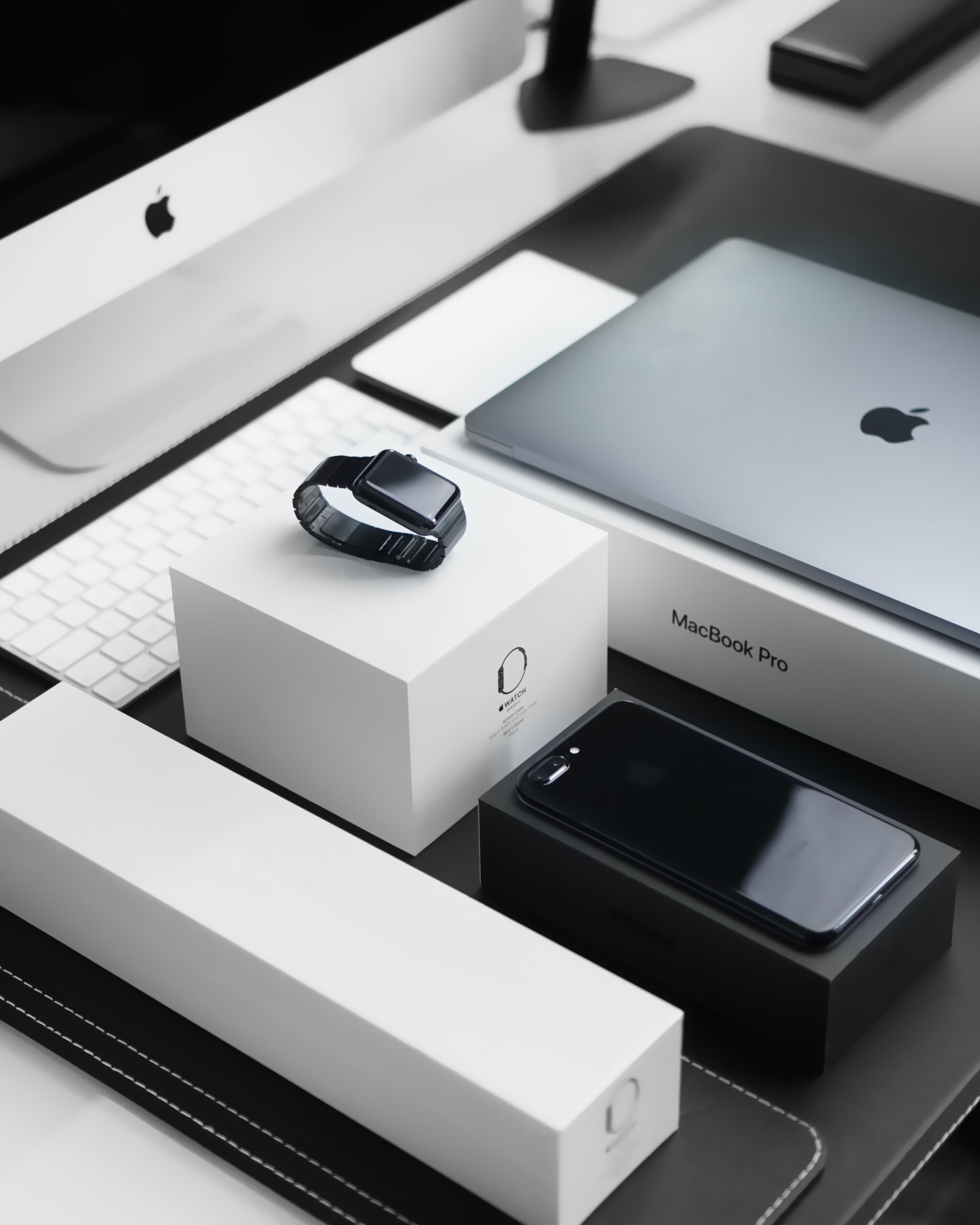 The iPhone 14 is Apple's (AAPL) most powerful phone yet – and what else is new?
The iPhone 14 is Apple's (AAPL) most powerful phone yet – and what else is new?
Every generation of iPhone shows better functional specs than the last. The 14 has Apple's most powerful phone processor... its most diverse set of cameras to date... and it's the first iPhone without a physical SIM card slot.
(Instead, it can hold up to eight different digital "eSIM" cards at the same time... all while saving room for other components.)
The list of accolades goes on and on. There's no denying that it looks impressive on paper.
And yet, I don't believe Steve Jobs would ever have let this phone be released in its current state.
In his almost four decades at Apple's helm, Jobs never lost sight of the company's No. 1 goal – making the customer's life better. As he liked to put it...
You've got to start with the customer experience and work back toward the technology – not the other way around.
Despite the iPhone 14's laundry list of powerful features, it also includes a glaring flaw that hurts the customer experience. And it's not like users can ignore this flaw, either. It has to do with the very design of the phone.
Apple's failure to focus on form doesn't seem like it has hurt the company too much... at least, not at first glance. In reality, though, Uniform Accounting shows just how damaging this trend has been to what was once one of the world's most creative businesses.
 The iPhone 14 has basically caught up to the power of a modern digital camera...
The iPhone 14 has basically caught up to the power of a modern digital camera...
You might have even heard about recent short films being shot on the iPhone 14 Pro. It's great for everyone from photography enthusiasts to industry professionals.
Except there's one issue... The camera sticks out way too far. It makes the phone unbalanced and wobbly when placed on a flat surface. It also makes it harder to use a wireless charger.
It's such a problem that there's even a name for it. Google search "iPhone wobble" or "iPhone bump," and you'll see what I'm talking about. Customer after customer has complained about this design flaw.
The camera sticks out so far that some bestselling cases are specifically marketed to help with the iPhone bump. (They don't fix it... They just help.)
And it's not just that the wobble is annoying. It's harmful. With part of the phone resting that high, it's easy to accidentally apply too much pressure and bend or crack it.
While this is bad from a form standpoint, it might not seem like such a big deal for a multitrillion-dollar tech giant. After all, a small form flaw hardly presages the end of Apple's smartphone reign.
That being said, it actually speaks to a much larger departure from what Apple is supposed to do better than anyone...
Consider this: The iPhone 14 is the first Apple phone to feature an "always on" display. It won't turn completely dark, so you can always check the time or your notifications.
Think about what that means in terms of using the phone. Clearly, the designers wanted the phone to rest on its back. There would be no need for an always-on display if it was facedown all the time.
So someone – or an entire team of someones – was hyper-focused on the technology.
They forgot about the customer experience.
 Now, I'm not saying that Apple has done everything wrong since Steve Jobs died in 2011...
Now, I'm not saying that Apple has done everything wrong since Steve Jobs died in 2011...
And I think Jobs and current CEO Tim Cook were an incredible team. Apple flourished under Jobs' vision and inspiration, while Cook kept the trains running on time.
What's missing is that kind of thought to both form and function. And this isn't about my personal problems with the iPhone 14 design. (At least, it's not only about that.) The numbers prove that this departure has hurt the business...
Apple released the first iPhone in 2007. That year, the company's Uniform return on assets ("ROA") was 55%.
That's not bad by any means. It's more than quadruple the 12% corporate average.
It was only the beginning for Apple, too. Jobs was obsessed with improving the form and function of the iPhone.
Through Jobs' death in 2011, every new generation of iPhone made better use of these factors. The screen took up more of the phone's surface. It was thinner, while still featuring a higher resolution.
And to no one's surprise, Uniform ROA soared. It hit 159% in 2011. That's a tremendous return on a piece of hardware.
For every $1 billion in assets, Apple generated almost $1.6 billion of free cash flow annually to do with as it pleased. That's one of the highest ROAs we've ever recorded in our database of nearly 23,000 companies worldwide.
Form started to suffer after Jobs died. And so did returns. Take a look...

Jobs worked on the iPhone 5, which released in 2012. Apple's Uniform ROA was still 149%. After that, things took a turn for the worse.
Apple engineers kept trying to fulfill Jobs' wishes. Successive generations of iPhones got thinner, the screens bigger, and the cameras better. The disconnect between form and function started to rear its ugly head almost immediately...
The iPhone 6 was so thin that some customers accidentally bent them out of shape in their pockets. And as the cameras have improved, the iPhone bump has only gotten worse.
It's no surprise then that Apple's Uniform ROA has suffered. It's back to where it was when the first iPhone released.
 Apple is still the biggest public company on the planet...
Apple is still the biggest public company on the planet...
However, it earns a lot less for each dollar invested – like, 70% less – than it did back in 2011. It's a far less efficient business.
The issues with the iPhone 14 aren't exclusive to the iPhone 14. They're representative of more than a decade of problems since the company lost Steve Jobs... and lost its way. Innovation, product creation, and team collaboration have suffered.
The company has forgotten that what set it apart was its ability to leverage form and function together, not just function by itself.
So here I am, typing on my iPhone 14, conceding that it's one of the best products out there... just not as good as it could have been or would have been. Apple's numbers reflect that.
Wishing you love, joy, and peace,
Joel
July 14, 2023



 The iPhone 14 is Apple's (AAPL) most powerful phone yet – and what else is new?
The iPhone 14 is Apple's (AAPL) most powerful phone yet – and what else is new? 


